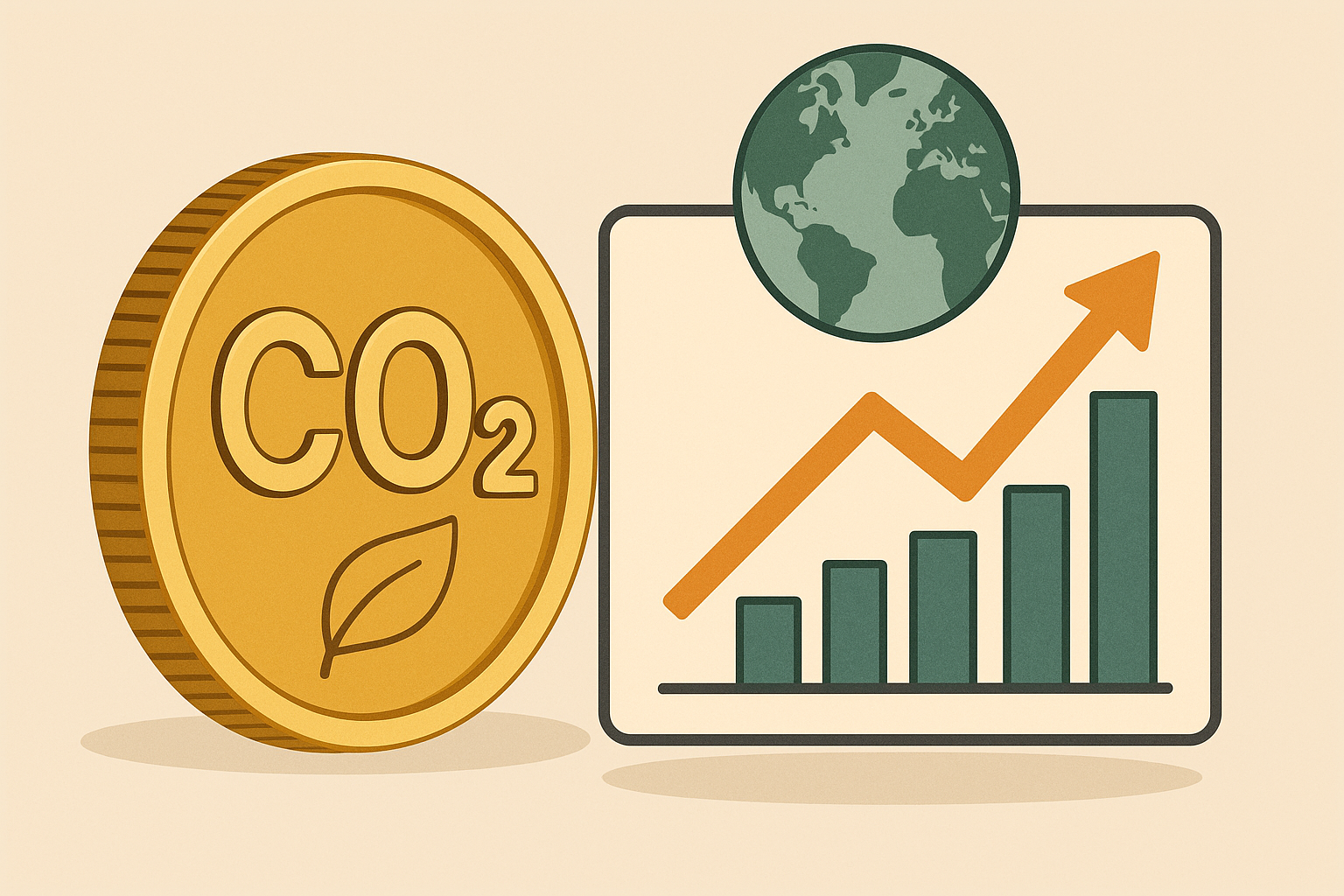Introduction
Carbon Credits & Climate Finance: The Next Billion-Dollar Market? In an era marked by rising global temperatures, frequent natural disasters, and increasing pressure on policymakers to act on climate change, a new market is gaining momentum—carbon credits and climate finance. What was once a niche domain of environmental scientists and sustainability advocates is now transforming into a mainstream investment frontier attracting governments, multinational corporations, and investors alike.
According to McKinsey & Company, the global carbon credit market could be worth over $50 billion by 2030, up from just $2 billion in 2020. As the world leans toward net-zero targets and decarbonization, carbon credits and climate finance are not just tools for climate action—they are opportunities for massive economic transformation.
Table of Contents
What Are Carbon Credits?
A carbon credit is a tradable permit that gives the holder the right to emit one metric ton of carbon dioxide (CO₂) or an equivalent amount of another greenhouse gas (GHG). Organizations that reduce their emissions below permitted levels can sell their excess allowances as carbon credits.
There are two major types of carbon markets:
- Compliance markets – Regulated by governments or international bodies (e.g., EU Emissions Trading System).
- Voluntary carbon markets (VCM) – Where companies or individuals buy carbon credits to offset emissions voluntarily.
Carbon credits are usually generated through climate-positive projects like:
- Reforestation and afforestation
- Renewable energy development
- Methane capture from landfills
- Improved cookstove programs
Understanding Climate Finance
Climate finance refers to local, national, or international funding that supports mitigation (reducing emissions) and adaptation (coping with climate impacts). It includes:
- Grants
- Loans
- Private equity
- Public subsidies
According to the United Nations Framework Convention on Climate Change (UNFCCC), developed countries have pledged to mobilize $100 billion annually to support climate initiatives in developing nations.
Climate finance serves a dual purpose: combating climate change while fostering sustainable development and poverty reduction.
Why the Buzz? Key Drivers of Market Growth
1. Global Net-Zero Commitments
More than 130 countries have set or are considering net-zero emission targets. This includes heavyweights like the U.S., China, and the EU. For businesses, reducing emissions is no longer optional—it’s a reputational, regulatory, and strategic necessity.
2. Corporate ESG Pressures
Environmental, Social, and Governance (ESG) metrics are now central to investor decisions. Companies are under increasing pressure to prove their climate action credentials. Buying carbon credits to offset unavoidable emissions is one path to achieve ESG goals.
3. Technological Advancements
Blockchain and AI are improving transparency and traceability in carbon markets. Platforms like Toucan Protocol and KlimaDAO are pioneering tokenized carbon credits, making trading and verification more efficient and secure.
4. Emerging Economies as Carbon Sinks
Countries in Africa, South America, and Southeast Asia hold immense potential to generate credits through natural climate solutions. These regions are becoming green investment hubs, attracting billions in climate finance.
Challenges Facing the Market
While the prospects are promising, the market is not without its flaws:
1. Lack of Standardization
There’s no single global authority regulating carbon credit quality. As a result, greenwashing—where companies make misleading claims about their climate impact—remains a concern.
2. Verification and Permanence
How can we be sure a forest planted to offset emissions won’t be cut down a decade later? Verification standards like Verra (VCS) and Gold Standard aim to address this, but widespread trust is still being built.
3. Equity and Justice Concerns
Climate finance must ensure fair benefits to indigenous communities and vulnerable groups, who often bear the brunt of climate impacts yet contribute the least to emissions.
Opportunities for Investors and Innovators
Fintech Meets Climate
Startups are developing innovative solutions to bridge finance and carbon markets:
- Pachama uses satellite imagery and AI to monitor forest-based carbon credits.
- Carbonplace facilitates bank-to-bank trading of verified credits in real-time.
Green Bonds and Sustainability-Linked Loans
These instruments are increasingly popular with institutional investors. In 2023 alone, green bond issuances surpassed $500 billion globally, according to Climate Bonds Initiative.
Nature-Based Solutions (NbS)
Projects focusing on wetlands, soil restoration, and coastal mangroves provide high-quality, long-duration credits and support biodiversity alongside carbon capture.
Case Studies: Big Moves in the Market
Microsoft’s Carbon Negative Goal
Microsoft aims to be carbon negative by 2030 and remove all historical emissions by 2050. It has already invested in over 1 million metric tons of carbon removal through forestry and biochar projects.
Shell’s Carbon Credit Program
Shell offers customers the option to offset their fuel emissions at the pump by buying credits from nature-based projects.
These examples show how climate action is moving from boardroom talk to strategic implementation.
The Role of Governments and Policy
Government regulation will play a pivotal role in scaling and securing the carbon market. Some initiatives already gaining traction include:
- Article 6 of the Paris Agreement, which allows countries to trade emission reductions.
- The U.S. Inflation Reduction Act, which earmarks over $369 billion for climate and energy policies.
- EU’s Carbon Border Adjustment Mechanism (CBAM), ensuring imported goods are taxed based on their carbon footprint.
Such measures could make carbon pricing universal, predictable, and effective in driving emissions down.
How Individuals Can Participate
- Offset Personal Carbon Footprint Websites like Cool Effect and Gold Standard allow individuals to fund verified carbon reduction projects.
- Invest in Green Funds Mutual funds and ETFs now include ESG and climate-focused options that invest in sustainable industries.
- Support Transparent Companies Buy from brands that disclose their carbon footprints and invest in sustainable supply chains.
Conclusion
Carbon credits and climate finance are no longer fringe topics—they’re the building blocks of a green economic revolution. As we race against time to limit global warming, this evolving marketplace offers both a solution and a significant opportunity. With greater transparency, technological innovation, and policy support, carbon markets could truly become the next trillion-dollar sector.
Whether you’re a policymaker, business leader, investor, or citizen—your role in this ecosystem can help shift the planet toward a more sustainable and resilient future.
Find more Finance content at:
https://allinsightlab.com/category/finance/

